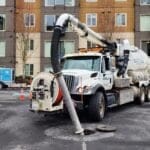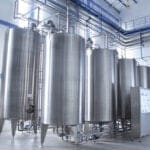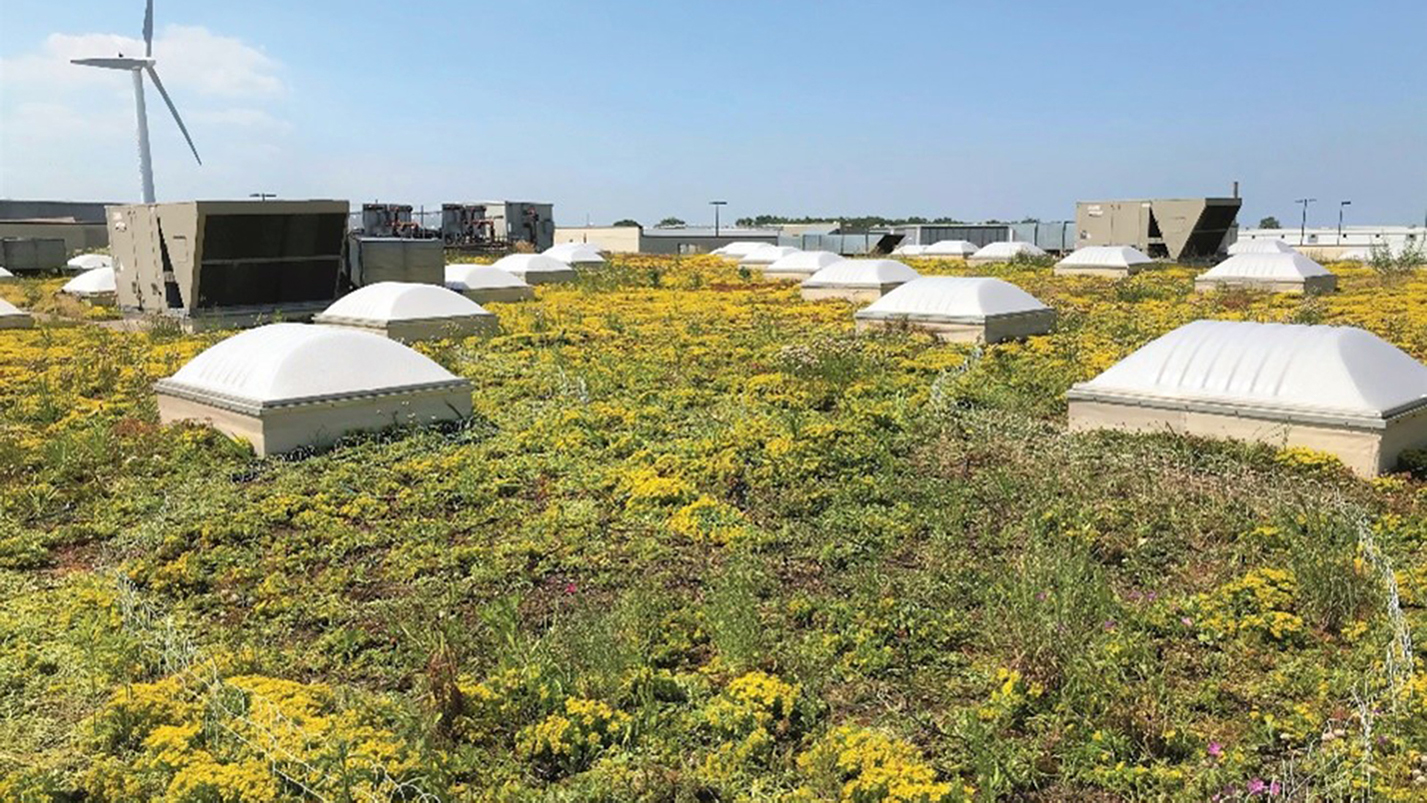City of Quincy
Article II Stormwater Management & Land Disturbance
300.15 Findings and Objectives
The City of Quincy has enacted a Stormwater Management Ordinance in order to comply with state and federal regulations and to manage stormwater in a responsible and sustainable manner. The objectives of the ordinance are:
- Protect groundwater and surface water from degradation;
- Require practices that eliminate soil erosion and sedimentation and control the volume and rate of stormwater runoff resulting from land disturbances;
- Promote infiltration and the recharge of groundwater;
-
Prevent pollutants from entering the City of Quincy municipal separate storm sewer system (MS4) and to minimize discharge of pollutants from the MS4;
-
Ensure adequate, long-term operation and maintenance of structural stormwater best management practices;
-
Ensure that soil erosion and sedimentation control measures and stormwater runoff control practices that are incorporated into the site planning and design processes are implemented and maintained;
-
Require practices to control waste such as discarded building materials, concrete truck washout, chemicals, litter, and sanitary waste at the construction site that may cause adverse impacts to water quality
-
Comply with state and federal statutes and regulations relating to stormwater discharges; and
-
Establish the City of Quincy’s legal authority to ensure compliance with the provisions of this article through inspection, monitoring, and enforcement
300.21 Performance Standards
A. Erosion and sediment controls. Criteria for erosion and sediment control and stormwater management shall be in accordance with the EPA Region 1 Construction General Permit, standards of the Massachusetts Stormwater Handbook, and any supplemental requirements that may be contained under the regulations of §
300-19A of this article.
B. Construction and waste materials. Construction related materials and wastes generated from development activities, including demolition debris, litter, and sanitary wastes, shall be managed to prevent mobilization of pollutants into drainage structures and/or Waters of the United States.
C. Inspections. Conformance with erosion and sediment control and construction waste management standards will be assessed during construction site inspections.
- Construction site inspections shall be conducted by the applicant’s qualified inspector. Noncompliance issues identified during inspections are the responsibility of the construction site operator to resolve in a timely manner. Inspections by the applicant shall occur at the frequency prescribed in the EPA Region 1 Construction General Permit and include information consistent with construction general permit inspection reporting requirements.
- Inspections shall occur during construction of construction-phase BMPs and after construction of construction-phase BMPs to verify they are working as described in the approved plans.
- The City Engineer or delegated representative(s) may conduct periodic inspections of the development to verify compliance with the conditions of the stormwater management and land disturbance permit.
- All inspection reports prepared by the applicant shall be made available during the City Engineer or delegated representative’s inspections.
- Additional inspections may be conducted as needed if chronic deficiencies are identified.
D. New development. Stormwater management systems constructed as part of new development projects shall be designed to remove 90% of the average annual load of total suspended solids (TSS) generated from the total post-construction impervious surface area on the site and 60% of the average annual load of total phosphorus (TP) generated from the total post-construction impervious surface area on the site. In addition, stormwater management systems constructed as part of new development projects located within the Neponset River watershed shall be optimized for nitrogen removal. This can be achieved by one of the following methods, provided they meet, at a minimum, the design standards of the Massachusetts Stormwater Handbook:
- Installing BMPs that meet pollutant removal percentages; Massachusetts Stormwater Handbook;
- Retaining the volume of runoff equivalent to, or greater than, one inch multiplied by the total post-construction impervious surface area on the new development site;
- A combination of these two methods; or
- Utilization of offsite mitigation within the same USGS HUC12 to meet the equivalent pollutant removal requirements.
E. Redevelopment. Stormwater management systems constructed as part of redevelopment projects shall be designed to remove 80% of the average annual load of total suspended solids (TSS) generated from the total post-construction impervious surface area on the site and 50% of the average annual load of total phosphorus (TP) generated from the total post-construction impervious surface area on the site. In addition, stormwater management systems constructed as part of redevelopment projects located within the Neponset River watershed shall be optimized for nitrogen removal. This can be achieved by one of the following methods, provided they meet, at a minimum, the design standards of the Massachusetts Stormwater Handbook:
- Installing BMPs that meet pollutant removal percentages; Massachusetts Stormwater Handbook;
- Retaining the volume of runoff equivalent to, or greater than, 0.8 inch multiplied by the total post-construction impervious surface area on the new development site;
- A combination of these two methods; or
- Utilization of offsite mitigation within the same USGS HUC12 to meet the equivalent pollutant removal requirements.
Massachusetts Stormwater Management Standards Compliance
The MassDEP has developed ten stormwater performance standards for properties within Massachusetts.
1. No new stormwater conveyances may discharge untreated stormwater directly to or cause erosion in wetlands or waters of the Commonwealth.
2. Stormwater management systems must be designed so that post-development peak discharge rates do not exceed pre-development peak discharge rates.
3. Loss of annual recharge to groundwater shall be eliminated or minimized through the use of infiltration measures including environmentally sensitive site design, low impact development techniques, storm water best management practices, and good operation and maintenance. At a minimum, the annual recharge from the post-development site shall approximate the annual recharge from pre-development conditions based on soil type. This standard is met when the stormwater management system is designed to infiltrate the required recharge volume as determined in accordance with the Massachusetts Stormwater handbook. .
4. Stormwater Management systems shall be designed to remove 80% of the average annual post-construction load of Total Suspended Solids (TSS). This standard is met when:
- Suitable practices for source control and pollution prevention are identified in a long-term pollution prevention plan, and thereafter are implemented and maintained;
- Structural storm water best management practices are sized to capture the required water quality volume determined in accordance with the Massachusetts Stormwater Handbook.
- Pretreatment is provided in accordance with the Massachusetts Stormwater Handbook.
5. For land uses with higher potential pollutant loads (LUHPPL), source control and pollution prevention shall be implemented in accordance with the Massachusetts Stormwater Handbook to eliminate or reduce the discharge of stormwater runoff from such land uses to the maximum extent practicable. If, through source control and/ or pollution prevention, all land uses with higher potential pollutant loads cannot be completely protected from exposure to rain, snow, snow melt and storm water runoff, the proponent shall use the specific structural storm water BMPs determined by the Department to be suitable for such uses as provided in the Massachusetts Stormwater handbook. Stormwater discharges from land uses with higher potential pollutant loads shall also comply with the requirements of the Massachusetts Clean Waters Act.
6. Stormwater discharges within the Zone II or Interim Wellhead Protection Area of a public water supply and storm water discharges near any other critical area require the use of the specific source control and pollution prevention measures and the specific structural storm water best management practices determined by the Department to be suitable for managing discharges to such areas as provided in the Massachusetts Stormwater Handbook.
7. A redevelopment project is required to meet the following Stormwater Management Standards only to the maximum extent practicable: Standard 2, Standard 3, and the pretreatment and structural storm water best management practice requirements of Standards 4, 5 and 6. Existing Stormwater discharges shall comply with Standard I only to the maximum extent practicable. A redevelopment project shall also comply with all other requirements of the Stormwater management Standards and improve existing conditions.
8. A plan to control construction related impacts including erosion, sedimentation and other pollutant sources during construction and land disturbance activities (construction period erosion, sedimentation, and pollution prevention plan) shall be developed and implemented.
9. A long-term operation and maintenance plan shall be developed and implemented to ensure that stormwater management systems function as designed.
10. All illicit discharges to the storm water management system are prohibited.
Additional Links
City of Quincy Storm Drain Management Program
City of Quincy Stormwater Management Plan
City of Quincy Municipal Code

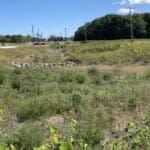 Kenosha, Wis. Highway KR Regenerative Stormwater ConveyanceThe Root-Pike Watershed Initiative Network Kenosha County, and others worked with AQUALIS to design and implement an innovative solution for stormwater control along Highway KR.
Kenosha, Wis. Highway KR Regenerative Stormwater ConveyanceThe Root-Pike Watershed Initiative Network Kenosha County, and others worked with AQUALIS to design and implement an innovative solution for stormwater control along Highway KR.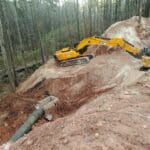 Durham, N.C. Sinkhole Leads to Stormwater System RehabilitationThe tenant on this property noticed a depression that opened to the ground below and notified the property owners.
Durham, N.C. Sinkhole Leads to Stormwater System RehabilitationThe tenant on this property noticed a depression that opened to the ground below and notified the property owners.